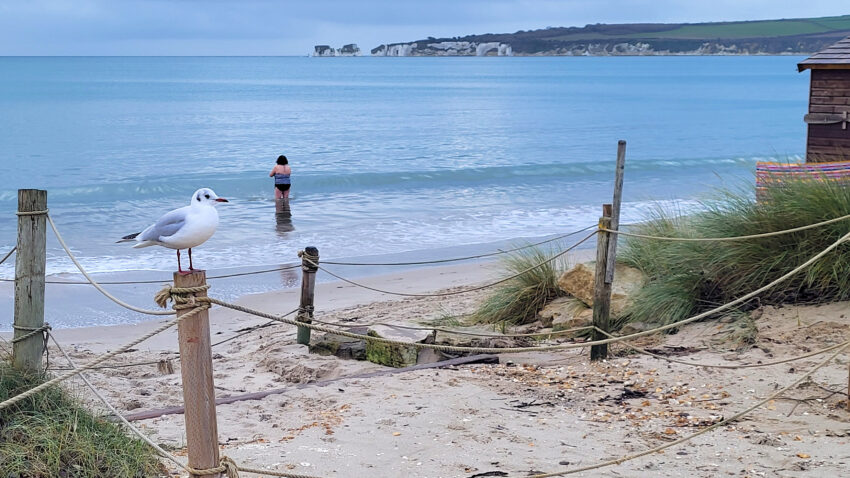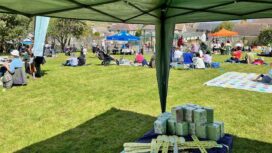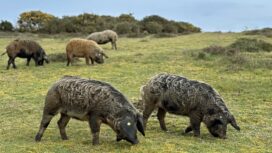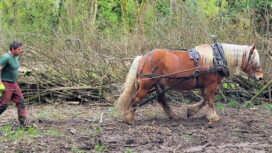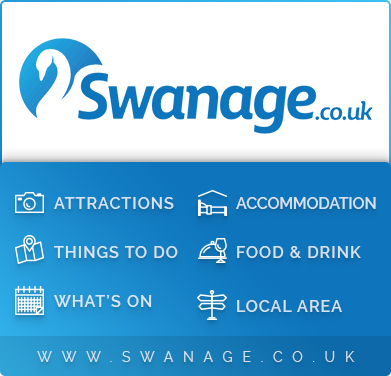Volunteers from Swanage and across Purbeck are being sought to help carry out a winter survey of the number of gulls, commonly called seagulls, amid fears that numbers are in decline.
Despite first impressions that gulls have a healthy presence in Swanage stealing chips from tourists, the picture in winter is more complicated as they gather together to roost communally on cliffs, lakes and estuaries.
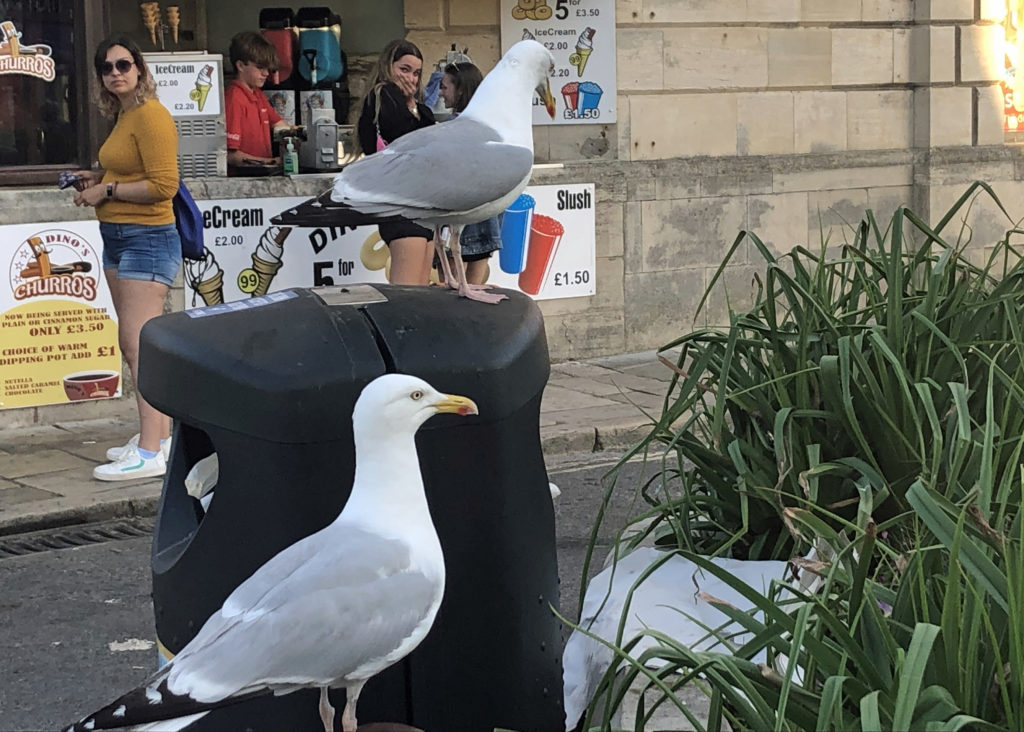
Herring gulls are a common sight in Swanage in summer as they look for an easy meal, but breeding numbers are in sharp decline
Kittiwakes close to vanishing from Purbeck
Although the term seagull is commonly used, there’s around 50 different species worldwide of the gull family, and none are actually called ‘seagull’ with many living some distance from the sea.
The British Trust for Ornithology (BTO) has plans to carry out its first winter survey of gull numbers in two decades at sites around the UK and needs volunteers to sign up to help at Swanage, Worth Matravers, Swyre Head, East Lulworth and Durdle Door.
Extra Purbeck sites at Little Sea, Studland, Ower Bay and Arne have already attracted enough volunteers to be fully covered, along with half a dozen further key sites in Poole Harbour, including Brownsea Island.
The winter gulls survey, code named Wings, aims to visit known gull roost sites as the birds gather at dusk, counting six key species – black headed gulls, common gulls, Mediterranean gulls, lesser black backed gulls, herring gulls and great black backed gulls.
All of these gull species are of conservation concern, and their breeding populations are already either amber or red listed in the UK.
Indeed, one gull species – the kittiwake – is close to disappearing completely from the coastline around Swanage, possibly due to a change in food supply. It has been placed on the red alert list of the International Union for Conservation of Nature, meaning it may face global extinction.

Durlston Country Park ranger Ali Tuckey says that data on local seabird populations is highly significant
“Some species really are in trouble”
Durlston Country Park ranger Ali Tuckey said:
“Gulls and seabirds in general are really good indicators of problems in the oceans, as their populations are affected by changing sea temperatures, ocean acidity, climate change, over fishing – they are an early warning system for what is going on in the seas.
“The data on seabird population is highly significant in terms of understanding what we are doing to the seas generally – which is a very good reason to carry out projects like these.
“We are very lucky in Purbeck to have such a wide variety of gulls here, but it is a mixed picture – some are doing really well, some are doing less well.
“Some species really are in trouble, some seabird populations have been in dramatic decline over recent years and gulls are certainly part of that.
“In Purbeck, our kittiwake populations are on the verge of extinction and it’s quite possible that in as little as five years we won’t have any kittiwakes left here at all.”

A great black backed gull in flight, one of the species being counted in the Wings survey
“Well worth people getting involved”
Ali Tuckey added:
“We have been working with the National Trust and the Lulworth Estate over a number of years to carry out surveys of breeding populations of seabirds along the Purbeck Coast, which is really valuable data.
“Birds do change their behaviour – in the 1960s, Mediterranean gulls were really rare visitors to this country, but now there is a strong population in Poole Harbour and we see them a lot off Durlston as well. It’s not all doom and gloom, it’s a picture of ups and downs.
“We have written a daily diary here since 1976 and there’s an entry from the 1980s where Hamish, an expert birder, got very excited and double faulted while playing tennis when he saw a little egret flying over the court – whereas now they are as common as anything.
“Climate, weather, food supply, hunting and changes in habitats can all be factors in the numbers of birds rising and falling, which is why things like the Wings survey are very important.
“The conservation industry really doesn’t have a great amount of money for surveys, so the work done by volunteers can actually make an enormous amount of difference. It is well worth people getting involved and I would thoroughly recommend it.”
The most common species to spot in Purbeck
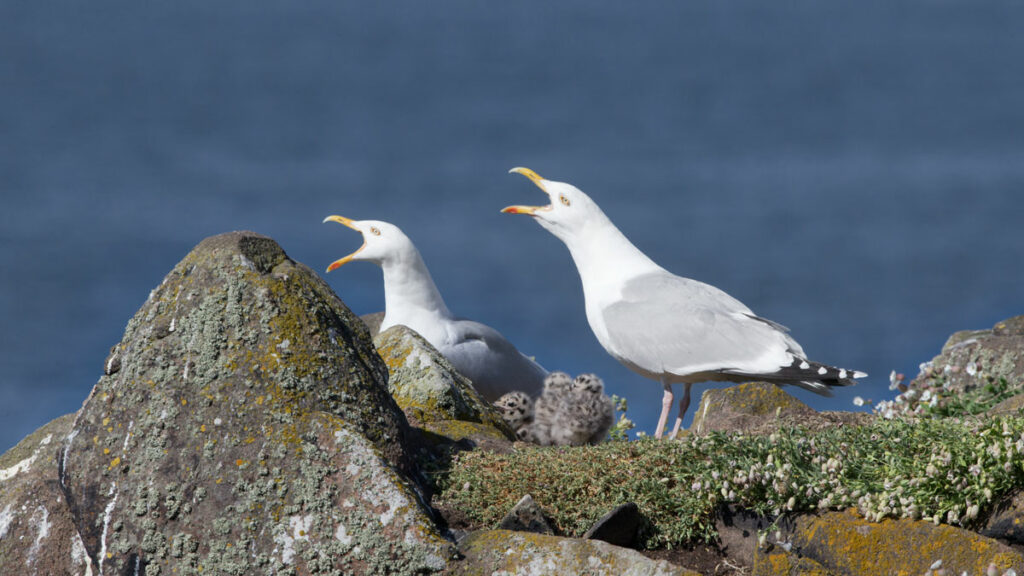
Young herring gulls in full cry, one of the more common species around Swanage
Herring Gull
The typical ‘seagull’ and the most likely culprit on Swanage seafront if your chips should be swiped by a bird. The last 50 years has seen a huge decline in breeding numbers, although non-breeding numbers are still strong with several thousand in and around Poole Harbour and Swanage Bay at peak times.
Larger than most gulls, they have pale grey upper parts and pink legs. In summer they have a white head, which develops dark streaking in winter.
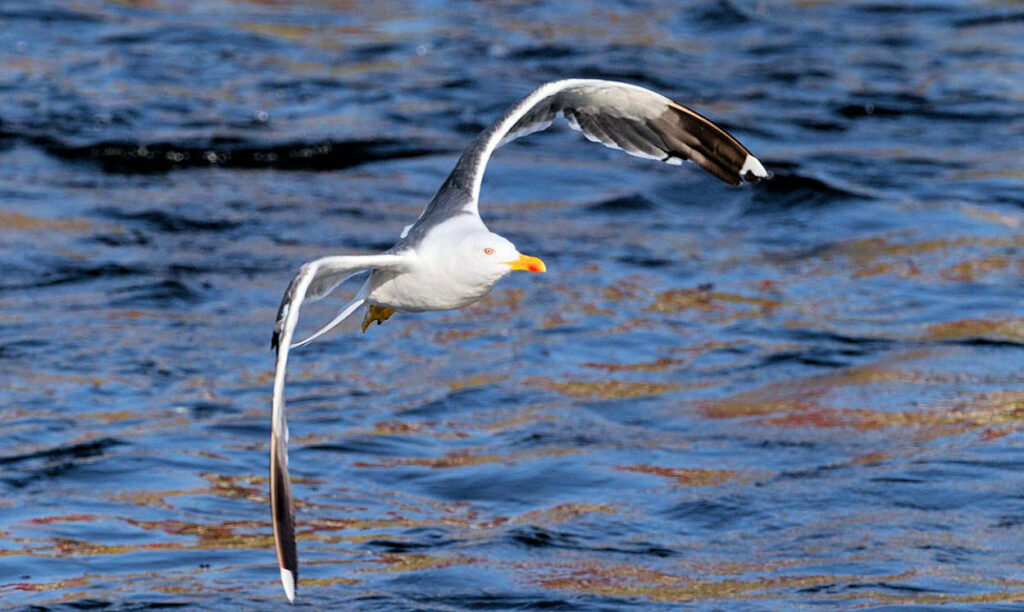
The lesser black backed gull will occasionally nest on roof tops
Lesser Black backed Gull
Slightly smaller birds than herring gulls, adults are recognised by their slate-grey upper parts, contrasting with blacker wing tips and bright yellow legs. Not seen in huge numbers around Swanage Bay or Poole Harbour where breeding pairs are thought to number only a couple of hundred, although there are occasional reports of rooftop pairs close to the coast.

A great black backed gull with wings outstretched pictured over Studland Bay
Great Black backed Gull
These are the world’s largest gulls, distinguished by their wing span which can be larger than an adult’s outstretched arms, heavy bill and large square head that makes the eye seem small and beady.
Adults have blackish upper parts and pale pinkish legs. Locally, their two favourite breeding spots are on top of Old Harry and the waters between Bramble Bush Bay and Brownsea island. Numbers increase in winter.

Confusingly, the black headed gull only has dark smudges on its head during winter
Black headed Gull
Probably one of the most common birds around Swanage and Poole Harbour, with a large breeding colony of around 6,000 pairs near Holton, although former colonies at Littlesea and Studland have gone.
They are smaller than most UK gulls, adults have pale grey upperparts and dark reddish legs and bill. The head is dark brown in summer and white in winter with dark smudges on the ears and above the eyes. In flight, look for a distinctive white leading edge to the wing, visible at some distance.

The common gull can be spotted throughout winter in the Wareham channel
Common Gull
Numbers build through the autumn starting in October, especially in the Wareham Channel where large numbers build up until March when they head on their way to Norway and Sweden.
They are like a much smaller, friendlier version of a herring gull, with pale grey upper parts, yellow green legs, a dark eye and a thin yellow bill. The legs and bill are duller in winter, when the head is streaked grey.

Mediterranean gulls, once a rare sight in Purbeck, are now increasingly common
Mediterranean Gull
Once a rare sight in Poole Harbour and Swanage Bay, numbers have now soared and in winter can commonly be seen feeding off the beaches at Studland. In the spring and summer they can be identified by their loud cat like ‘meow’ as they fly to and from feeding sites typically along the Wareham channel.
They are slightly larger than the similar black-headed gull, but adults are distinguished by paler upper parts, a scarlet bill and legs, white wing tips and a jet black hood in summer. In winter they have a dark mask stretching behind the eye.

A kittiwake and chick, a sight which may vanish from Swanage Bay within a decade
Kittiwake
Now rarely found away from the coast, with numbers in Swanage Bay seeming to reduce every year. Slightly larger than a black headed gull, with dark grey upper parts, a bright yellow bill and black legs.
The solid black wing tips look like they have been dipped in ink and lack the white spots of the common gull. Their name is derived from the sound of their call, a shrill ‘kittee-wa-aaake’.
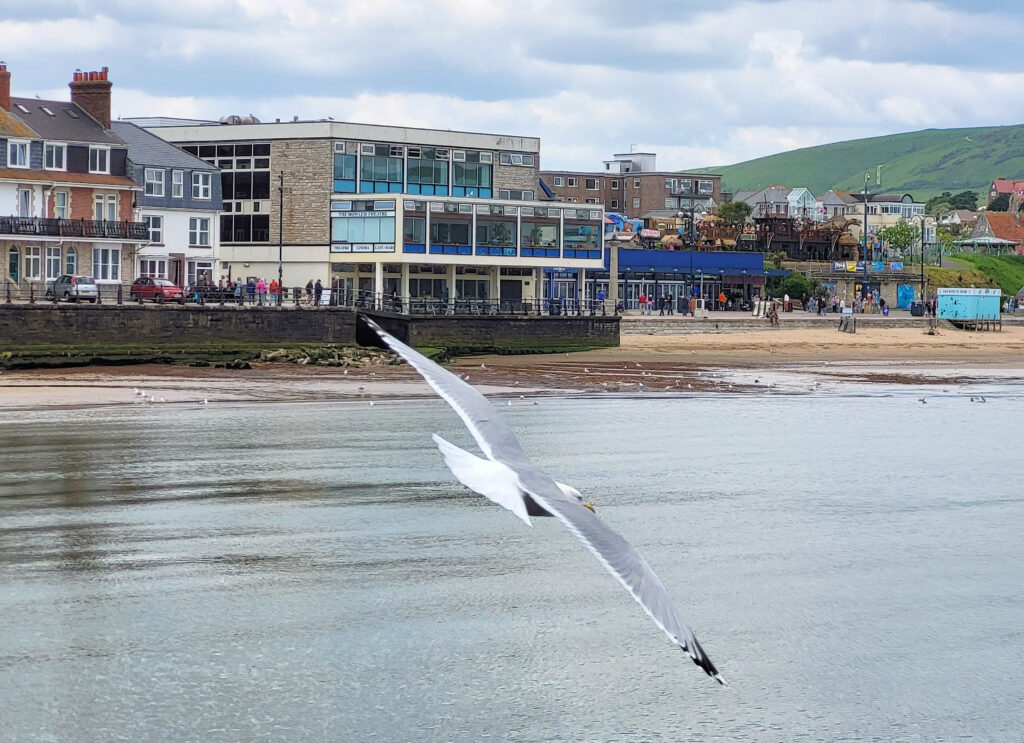
It’s been nearly 20 years since the last count of wintering gulls in Swanage and fresh data is needed
“A new survey is much needed”
Emma Caulfield, the survey organiser for Wings, said:
“The winter gull survey is a long running programme, which has taken place approximately every 10 years since 1953 – except there has been a gap of nearly 20 years since the last one so a new survey is much needed.
“Information collected will start to fill the gaps in our knowledge which have developed since then, which is particularly important as gulls have been impacted by the recent outbreak of highly pathogenic avian influenza – bird flu.
“While the summer population of gulls in the UK are well monitored through other schemes, less is known about the numbers and distribution of our wintering gulls.
“Many of our gull species are experiencing significant declines in their breeding populations, hence their conservation status, and we urgently need to improve our understanding of where and in what numbers they winter.
“This survey, targeting winter roosts sites, aims to address the gaps in our knowledge and will be vital information for us in making effective conservation efforts for the UK’s wintering gull populations.”
Further information
- Get involved with the Winter Gull Survey at the British Trust for Ornithology’s website
- Learn how to identify gull species at the RSPB website
